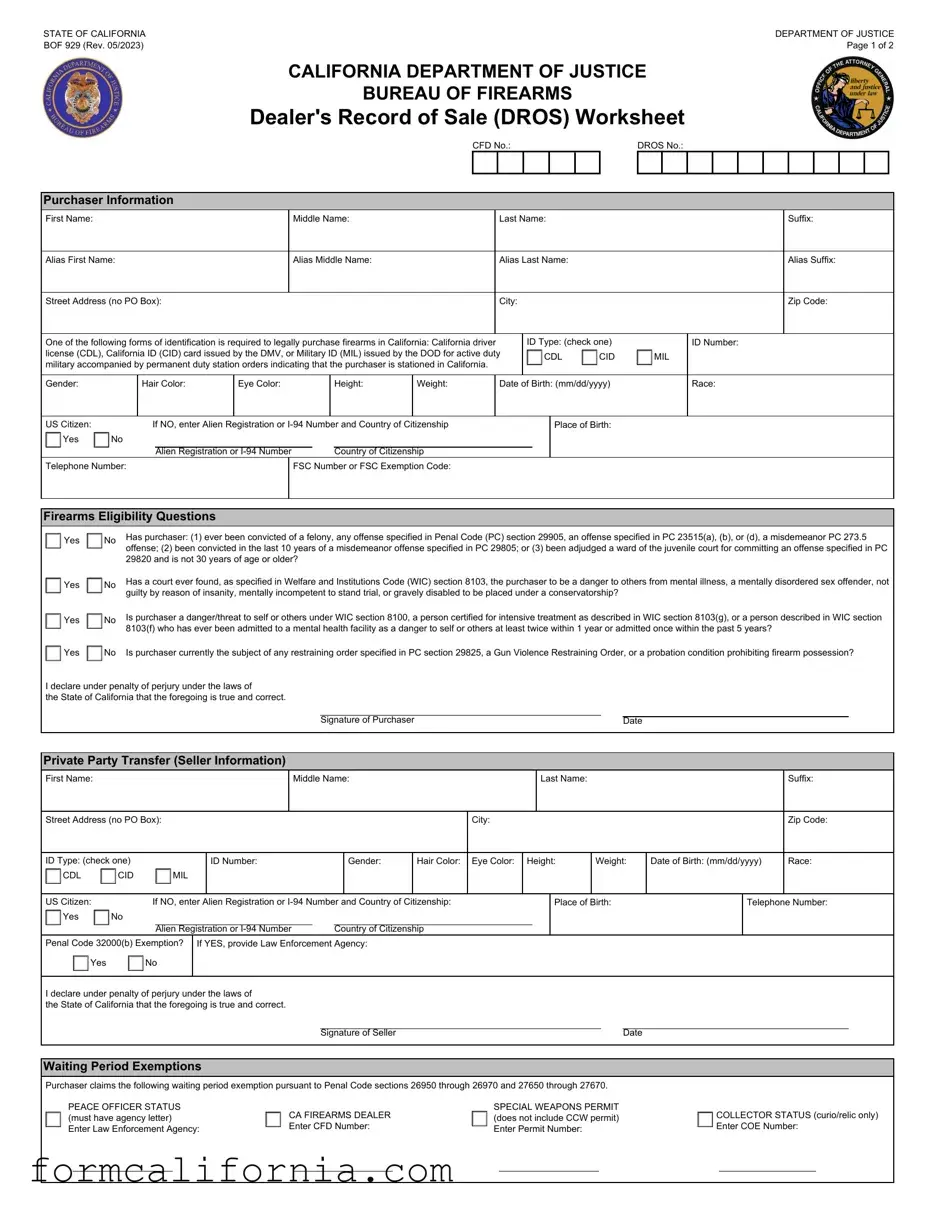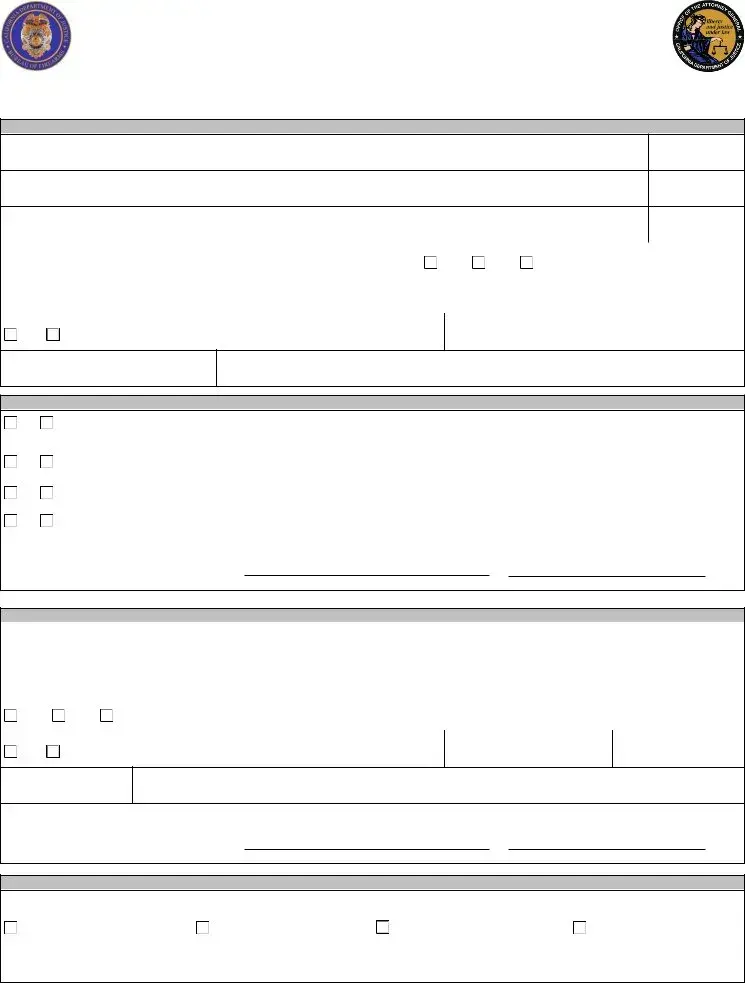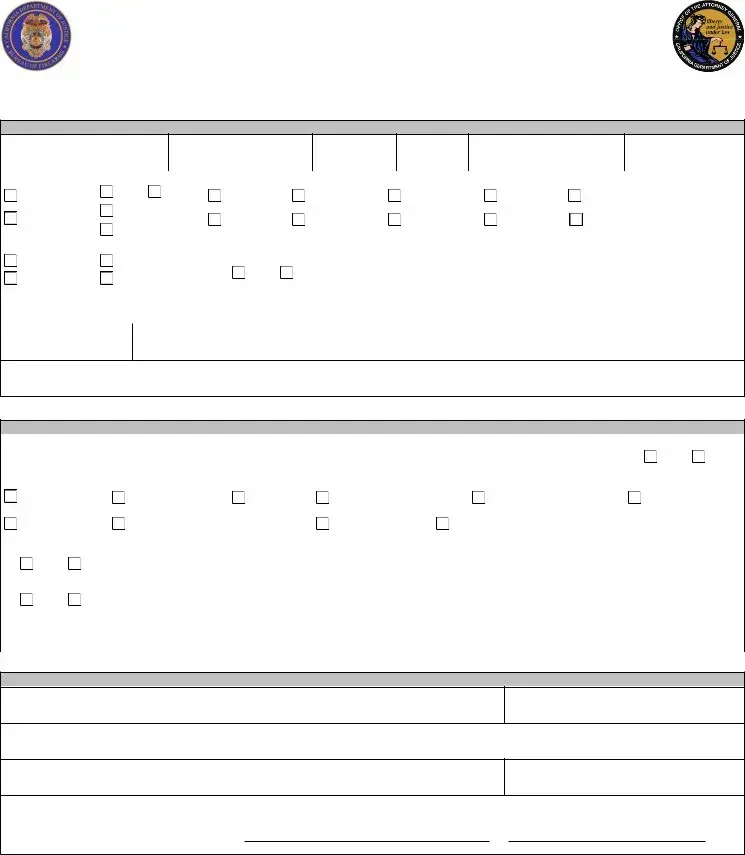Similar to the California DROS form, a Federal Firearms License (FFL) application also plays a crucial role in the regulation and control of firearms. The FFL application process involves extensive background checks and requires detailed personal and business information, similar to what is needed for a DROS form. Both documents are essential in ensuring that firearms are sold and distributed legally and responsibly, thus contributing to public safety.
The ATF Form 4473, or Firearms Transaction Record, has notable similarities with the California DROS form, as it is used nationwide by firearms dealers to record the sale of firearms. Both forms collect detailed information on the buyer, including personal identification and background questions aimed at preventing ineligible individuals from purchasing firearms. The emphasis on safety and legal compliance is a cornerstone of both documents.
Background check consent forms, commonly used by employers, share a similar purpose with the DROS form in collecting personal information to determine eligibility. While the DROS form focuses on the eligibility to purchase firearms, background check forms are broader, assessing suitability for employment. Both forms are preventive measures designed to ensure safety and compliance with relevant laws.
The California Firearm Safety Certificate (FSC) application is another document that dovetails with the DROS form. The FSC application process tests an individual's knowledge of firearms safety, similar to how the DROS form regulates the sale of firearms by ensuring the buyer is legally eligible. Together, they help to promote responsible firearm ownership and enhance public safety.
A Concealed Carry Weapon (CCW) permit application, while more focused on the permission to carry concealed weapons, aligns with the DROS form in its thorough scrutiny of the applicant's background. Both forms serve as crucial steps in vetting individuals, ensuring that only those who meet strict criteria can purchase or carry firearms, underscoring a commitment to public safety.
The Pawnbroker Transaction Form, used when firearms are pawned, shares parallels with the DROS form in its function of documenting the transfer of firearms. Both forms require detailed information about the firearm and the parties involved in the transaction, ensuring transparency and compliance with the law during the transfer process.
Gun show transaction forms, often utilized for the sale and purchase of firearms at gun shows, complement the functions of the DROS form. They track the exchange of firearms in a specific context, similar to how the DROS form regulates the sale at the dealer level. Both forms contribute to a comprehensive tracking system for firearm transactions, enhancing regulatory oversight.
The National Instant Criminal Background Check System (NICS) appeal form, though a response to a denial rather than a sale record, aligns with the DROS form in contributing to the framework that ensures only eligible individuals can purchase firearms. The appeal process allows for the review of denied transactions, similar to how the DROS form initiates a background check to prevent unlawful purchases.
Transfer of Ownership forms, not specific to firearms but used in various contexts to document the change in possession of assets, share the core concept of recording a transaction with the DROS form. While the DROS form specifically tracks the legal sale and ownership transfer of firearms, both types of documents serve to formalize and legalize the exchange of property.
Last, the Application for Restoration of Gun Rights is somewhat a counterpart to the DROS form, in the sense that it deals with the eligibility to own firearms, but from the perspective of restoring rights rather than verifying them at the point of sale. Both documents are integral to the legal framework surrounding gun ownership, emphasizing a balance between rights and safety.


 Yes
Yes  No
No
 Yes
Yes  No
No